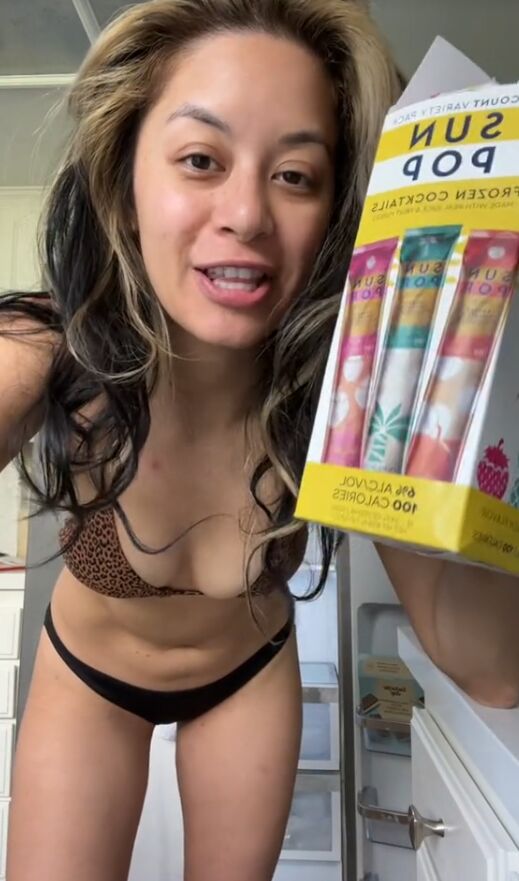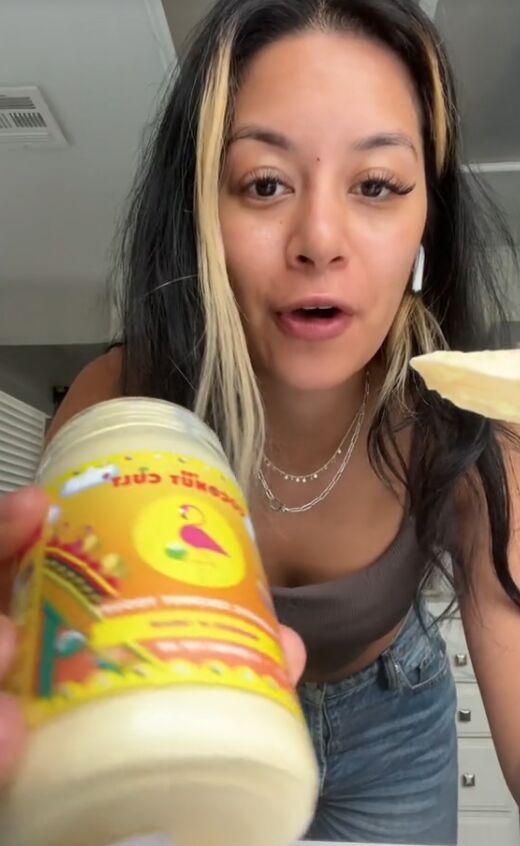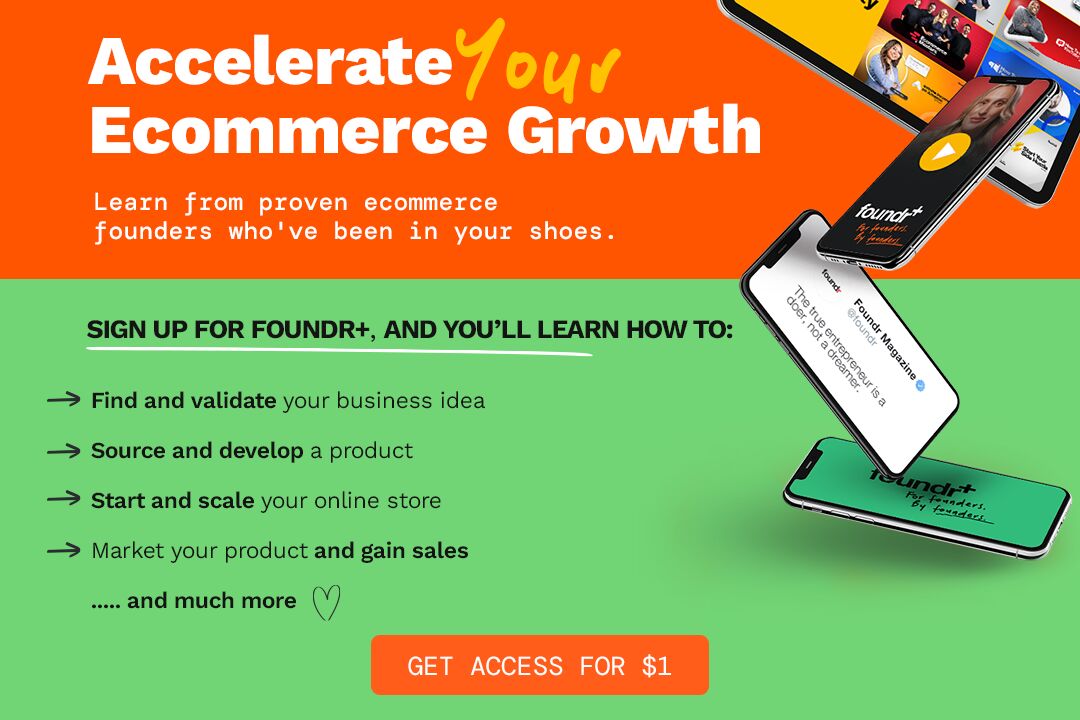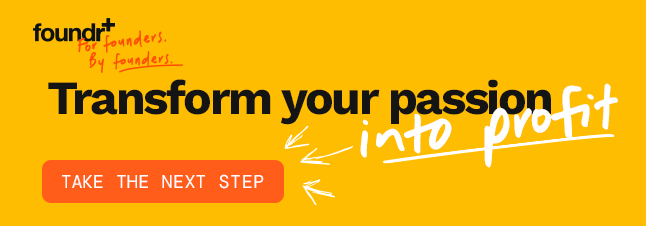Phoenix Ha made a viral TikTok ad by accident. Actually, it wasn’t supposed to be an ad at all.
She jumped out of the pool during an afternoon swim and ran to the fridge to grab a boozy popsicle. Without thinking, she started filming a review of the popsicle, praising the surprisingly pleasant taste, consistency, and price.
“I got these from Target thinking they’d be s***,” Ha says to the camera, still holding the popsicles. “They are so good. I ate this one so fast that I had to go and grab another one.”
The 30-second video abruptly ends with Ha reaching for the stop button while defending her impulse buy.
“If you tell me I waste money at Target again, you’re wrong,” Ha says.

The following week, the popsicles sold out at Target stores across California, and to date, the video has 930,000 views.
“As media buyers, we constantly say, ‘We need a CTA; we need to set every value prop under the sun,’ but that’s actually not the framework now,” Ha says.
Ha is the CEO of AdBeacon, a data company that helps founders stop burning ad spend and start scaling faster in a post-iOS 14 environment. She’s also one of the new instructors of Foundr’s updated course, How to Run Facebook Ads 2.0.
Sometimes, it feels like creative ads just add to the noise. But Ha says you need a bit of shock and awe to court a customer in the crowded social world.
Your First Data
Ha had no interest in getting involved with marketing.
She started modeling at 7 years old and observed firsthand the behind-the-scenes operations of product marketing.
“As I grew up and learned about marketing, I had no interest in it,” Ha says. “I literally had no idea that I would be in marketing today. But … that’s just where I landed, and it just seems to make sense. It clicked.”
After completing her undergraduate degree in business, she started working for boutique marketing agencies, partnering with major clients like Nike, Disney, and Modelo. By age 23, Ha landed a marketing director position at Supra Footwear. She ventured into B2B for almost half a decade, specializing in paid social. In 2022, she completed her MBA and launched her agency, AdBeacon.
“Why make a great cushy salary when I could go into small business?” Ha says of her mindset at the time. “When I did that, I learned a lot of really incredible stories of how hard it is to make money with such a small budget.”
Ha says cost-effective media buying begins with healthy first-party data. It’s the focus of her agency and a topic she speaks about publicly, including in the How to Run Facebook Ads course. First-party data is information people voluntarily give you through a web form, sign-up, email subscription, or first-time purchase.
“My heartbeat is toward first-party data because that’s data that you own,” Ha says.
“My heartbeat is toward first-party data because that’s data that you own.”
Because of continued security lockdowns from tech giants, obtaining detailed customer data is tricky for direct-to-consumer (DTC) brands. Before Apple’s iOS 14 update in 2021, online businesses could acquire specific customer data through Google and Facebook’s ad platforms.
“It’s not going to get easier, right? No one’s going to say, ‘You’re good to track me now,’” Ha says. “It’s not going to go back.”
So be wary of the advertising campaign results Facebook and Google provide you on their platforms. Ha says their numbers get inflated because they want the credit for a conversion.
“You need something that’s channel-agnostic—something that is not going to favor one or the other,” Ha says. “If you have that sobering truth and you have something that’s able to show you the difference but with proof, it just changes your perspective.”
Healthy first-party data is more than a robust email list. Ha says the most valuable data is the purchase history of first-time customers so that you can target them for a tailored upsell or offer in the future.
To obtain first-party data, Ha suggests:
- Live content on Instagram
- Weekly deals
- Surprise giveaways to social followers
- Incentives for returning customers
- Gamified campaigns
Above all, Ha says customization is essential for these tactics to be effective. For example, she worked with a local artist in California to design custom denim jackets for a brand. Customers who bought from the brand’s site accrued points they could redeem for a jacket.
“That number one pillar is to excite the customer,” Ha says. “To get ahead is to keep them loyal and have brand equity and buy-in.”
So how do you tantalize the customer? It all comes down to quiet.
Making a Move
Ha says media buying is like dating.
“I meet all these men, and there’s a lot of noise until I meet the one person that makes everything quiet and silent and makes me focused,” Ha says. “It’s the same thing with an ad. If that ad doesn’t bring a little bit of quiet to the noise and get someone’s attention, you’re already losing.”
Yes, there are formulas and frameworks for making creative ads, but Ha says the technical and trend side of advertising is in constant flux.
“Often we get into this machine of constantly creating ads because we know in our hearts we have to make more ads, but we don’t like the ads, and if you don’t like the ads, I guarantee you most people won’t,” Ha says.
If you’re stuck in the ad-making machine, Ha suggests looking at competitors’ ads—reviewing the creative, branding, and headlines, and asking yourself, “Which one would you move on?”
“That’s the gut check you need to have. And then, as you test, there’s the quantitative,” Ha says.
Right now, there are ad trends that are worth testing out. What’s working for Ha’s clients is static imagery because it stands out among short-form video and native ads that the audience doesn’t realize are ads.
“Consumers are getting very smart. They understand when something is an ad pretty quickly,” Ha says. “I’ve seen a lot of success in creating native ads that you don’t even realize are ads. And it takes you to a very uncomfortable place.”
Another ad that wasn’t supposed to be an ad is when Ha filmed herself scooping a spoonful of probiotic coconut yogurt. In the video, she explained that she’s lactose intolerant and that the coconut-based product doesn’t hurt her stomach and tastes good.
The video has 3.6 million views.

Ha says the hook is what drove people to stay.
“All it was was, ‘So apparently I can only have two scoops of this,’ and that’s it. What yogurt do you have that you’re only allowed to have two scoops?” Ha says. “So people are like, ‘What is this?’”
Ha says that’s why you need to think outside the box and avoid saturated hooks like, “Everyone’s asking me about my skincare routine.”
She didn’t end the video with a call to action. She just gobbled down the yogurt and mumbled, “Mmmmmm.”
“It wasn’t even meant to be an ad, but it woke me up,” Ha says. “Make it natural [like you’re talking] to your best friend, close it abruptly, and see what happens.”
“It wasn’t even meant to be an ad, but it woke me up.”
A/B testing is another way to unlock your ad creative, but it requires nuance.
Ha says you should always have a control when testing. She uses six ads within an ad set, including one control. Then, every three to seven days, she changes one thing for one ad—the copy, headline, or hook—but only one thing.
Ha’s other testing tip is to tailor creative ads for a specific audience.
“Every audience gets its own ad,” Ha says. “So if you’re saying that you’re only going to speak to cowboys, maybe your ads need to be [aimed] toward cowboys.”
Through testing, you can see what resonates with your audience, even if it’s not what you expected. Ha recently worked with an erectile dysfunction brand that was overspending on creative ads. The brand had invested in professionally produced creative, and Ha expected them to work.
“The high production ads flopped,” Ha says (pun not intended). “It was the one of me squeezing toothpaste out of a tube that just drove incredible conversions. And our cost per acquisition was so low in comparison to this highly produced ad.”
It’s not about the ad’s flashiness but its contents, even if it’s shot on a phone without professional lighting.
“Lukewarm doesn’t get you anywhere,” Ha says. “Be shocking—obviously within your core values and obviously something that’s palatable. Nobody moves the needle by not thinking outside the box.”
“Lukewarm doesn’t get you anywhere.”
If media buying is like dating, the romantic gestures are the moments that stand out.
“How are you bringing people to your store differently than anybody else?” Ha says. “What are you doing to get people to buy into you and to feel like that’s the brand they want to align with?”
Keep Learning: Influencer Marketing 101


















